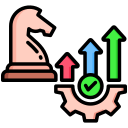Designing Your Personal Backlog
Dump ideas into one place: fitness, learning, relationships, finances, play. Don’t filter yet—volume beats precision at this stage. The backlog becomes your trusted vault, reducing mental clutter. Share your top three backlog ideas to kickstart momentum and inspire fellow readers.
Designing Your Personal Backlog
Ask which items create the greatest benefit if started now—and what pain grows if you postpone. Simple tags like Must, Should, Could reveal hidden leverage. Week by week, your list becomes sharper. Tell us which item you promoted today and why it mattered.




